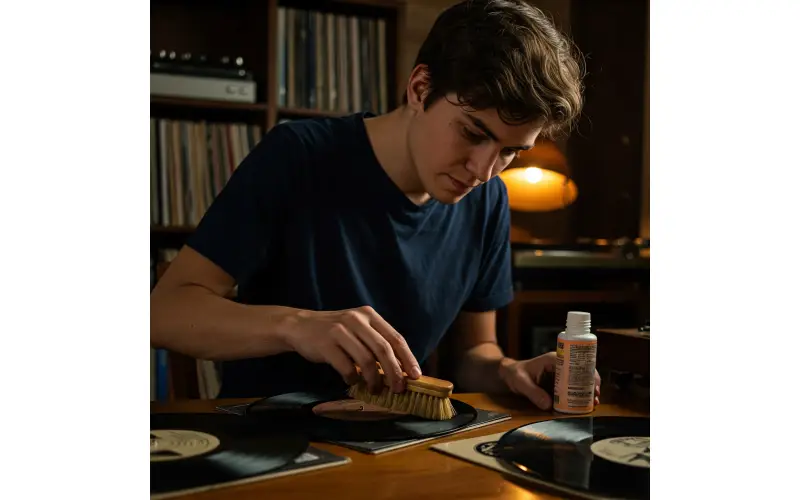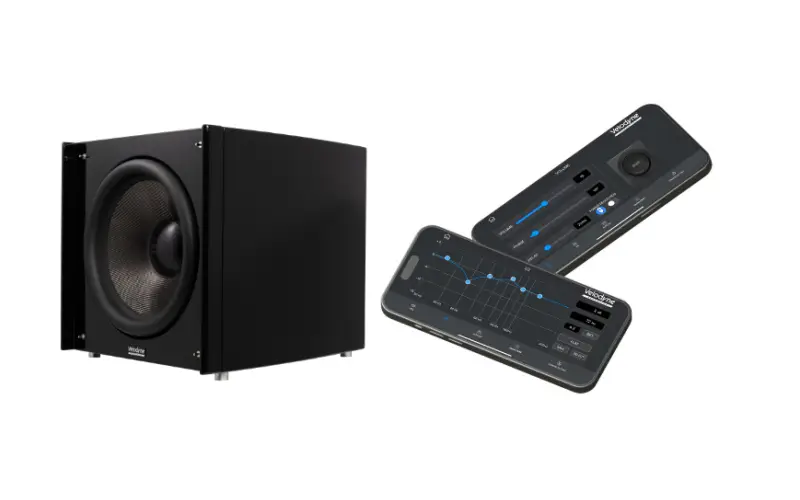By: Dipin Sehdev
Let's talk vinyl. That warm, analog sound, the tactile experience of holding a record, the ritual of dropping the needle – it's a love affair for many of us. But like any cherished relationship, it requires care and attention. Ignoring the grime and dust that inevitably accumulate on your records isn't just a sonic sin; it's a direct assault on your stylus and a slow, agonizing demise for your beloved collection.
The Silent Enemy: Why Clean Records Matter
Think of your record grooves as miniature canyons, meticulously carved to hold the audio information we crave. But these canyons are also magnets for dust, fingerprints, mold, and even the remnants of that spilled soda from your last listening session. Each particle acts like a tiny abrasive, grinding against your stylus as it tracks the groove.
Here's the grim reality:
- Stylus Damage: The delicate stylus, designed to vibrate with the minute variations in the groove, is forced to plow through this debris. This leads to premature wear, distortion, and even catastrophic damage. A worn stylus can also permanently damage your records.
- Sound Degradation: Dirt and grime obscure the delicate micro-vibrations that produce sound, resulting in surface noise, pops, crackles, and a muffled, lifeless audio experience. That warm, rich sound you love? Gone, replaced by a scratchy, distorted mess.
- Record Longevity: Accumulated grime can become embedded in the vinyl, permanently altering its sonic properties. Mold and mildew can actually eat away at the vinyl itself, leading to irreversible damage.
In short, neglecting record cleaning is like driving a high-performance sports car with dirty oil and bald tires. It's a recipe for disaster.
Enter the Spin Cycle: 5 Tips for Achieving Vinyl Nirvana
Now that we've established the importance of clean records, let's dive into the practical aspects. Here are five essential tips for keeping your vinyl grooves pristine:
1. The Gentle Brushdown: Daily Dust Removal
Think of this as your daily maintenance routine. Before and after each play, use a dedicated carbon fiber record brush. These brushes are designed to gently lift dust and static electricity from the record surface without scratching.
- Technique is Key: Hold the brush at a slight angle and gently sweep it across the record surface in a circular motion, following the grooves. Avoid pressing too hard, as this can push dust deeper into the grooves.
- Static Discharge: Carbon fiber brushes also help dissipate static electricity, which attracts dust like a magnet. Grounding the brush occasionally by touching a metal surface can further enhance its effectiveness.
- Clean Brush, Clean Record: Regularly clean your brush with a soft, lint-free cloth or a dedicated brush cleaner. A dirty brush will simply redistribute the grime.
This simple step can significantly reduce the amount of dust that accumulates on your records, extending their lifespan and improving sound quality.
2. The Deep Dive: Wet Cleaning for Stubborn Grime
For records with stubborn grime, fingerprints, or mold, a wet cleaning is essential. There are various methods, but the goal is the same: to thoroughly clean the grooves without damaging the vinyl.
- DIY Solutions: A popular DIY solution involves a mixture of distilled water and isopropyl alcohol (typically a 70/30 or 80/20 ratio). Distilled water is crucial, as tap water contains minerals that can leave deposits on the vinyl.
- Dedicated Cleaning Fluids: Numerous commercial record cleaning fluids are available, often formulated with surfactants and other cleaning agents. These fluids are generally considered safer and more effective than DIY solutions.
- Application Methods:
- Spray and Wipe: Spray the cleaning fluid onto the record surface and gently wipe it with a microfiber cloth, following the grooves.
- Spin Cleaners: These devices use a bath of cleaning fluid and rotating brushes to thoroughly clean both sides of the record simultaneously. They are a popular and effective option.
- Vacuum Record Cleaners: These high-end machines use a vacuum to remove the cleaning fluid and debris from the record surface, leaving it perfectly clean and dry. They are the most effective but also the most expensive option.
- Rinsing and Drying: After cleaning, rinse the record with distilled water to remove any residual cleaning fluid. Dry the record thoroughly with a lint-free cloth or a dedicated record drying rack. Air drying is also an option, but ensure the record is completely dry before playing.
3. The Mold Menace: Tackling Fungal Foes
Mold and mildew can be particularly damaging to vinyl records. If you notice white, powdery spots or a musty odor, it's time to take action.
- Isolate Infected Records: Immediately isolate infected records to prevent the mold from spreading to other parts of your collection.
- Mild Mold Removal: For mild mold infestations, a solution of distilled water and a small amount of mild dish soap can be effective. Gently wipe the mold with a soft cloth, following the grooves.
- Severe Mold Removal: For severe mold infestations, a stronger solution of distilled water and isopropyl alcohol may be necessary. However, use caution, as high concentrations of alcohol can damage some vinyl formulations.
- Thorough Drying: After cleaning, thoroughly dry the record to prevent the mold from returning. Consider using a dehumidifier in your storage area.
- Prevention: Store your records in a cool, dry place with good ventilation to prevent mold growth.
4. The Right Tools for the Job: Essential Cleaning Accessories
Investing in the right cleaning tools can make a significant difference in the effectiveness and ease of record cleaning.
- Carbon Fiber Record Brush: A must-have for daily dust removal.
- Microfiber Cloths: Soft, lint-free cloths for wiping and drying records.
- Record Cleaning Fluid: Choose a high-quality fluid that is safe for vinyl.
- Spin Cleaner or Vacuum Record Cleaner: Consider investing in one of these devices for more thorough cleaning.
- Distilled Water: Essential for rinsing and diluting cleaning solutions.
- Record Drying Rack: Helps to dry records quickly and evenly.
- Anti-Static Sleeves: Replace paper inner sleeves with anti-static sleeves to prevent dust and static buildup.
5. Storage Savvy: Protecting Your Investment
Proper storage is crucial for maintaining the cleanliness and longevity of your records.
- Vertical Storage: Store records vertically to prevent warping.
- Temperature and Humidity Control: Store records in a cool, dry place with stable temperature and humidity. Avoid extreme temperature fluctuations and high humidity.
- Protective Sleeves: Use high-quality inner and outer sleeves to protect records from dust, scratches, and other damage.
- Dedicated Storage Units: Invest in dedicated record storage units to keep your collection organized and protected.
- Regular Inspection: Periodically inspect your records for signs of damage or mold.
The Sonic Reward: A Clean Groove, a Happy Ear
Cleaning your records is an investment in your listening experience. By following these tips, you can ensure that your vinyl collection remains in pristine condition, delivering the warm, rich sound you love for years to come. Your stylus will thank you, and your ears will rejoice.
Remember, a clean record is a happy record. And a happy record makes for a happy listener. So, grab your brush, fire up your cleaning fluid, and let the spin cycle begin! Your vinyl journey just got a whole lot smoother.





